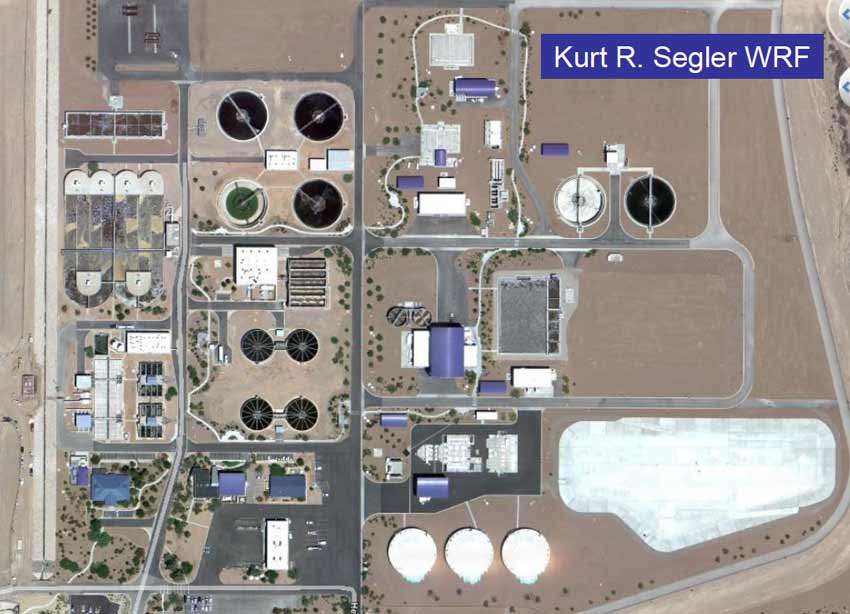
The Kurt R. Segler Water Reclamation Facility is Henderson's primary wastewater treatment plant and is capable of treating 32 million gallons of wastewater per day. Water takes quite the journey from the mountains in Colorado, to Lake Mead, and eventually into our homes. We use it in in our showers, toilets, washing machines, even kitchen sinks. After use, it heads off to be cleaned before it ventures back into Lake Mead. This water needs to go through a cleaning process called wastewater treatment, and luckily, this process is going high tech for ultimate results maintaining clean Lake Mead water. 
Water used outdoors is not captured and is often lost through evaporation. In Southern Nevada, water used in our homes, businesses and hotels can be divided into two categories – the water used outside for things like watering plants, filling pools or washing cars; and the water used indoors for showers, laundry or even flushing the toilets. The water used outdoors either evaporates or it runs down the street and enters our storm drains, goes on to retention ponds where it is held before moving on to the Las Vegas Wash. Water from storm drains is not treated so it enters the wash untreated, carrying chemicals and oils from our roads and sidewalks out to the lake where these contaminants may harm plants, fish and other species – including us. Indoor water, however, travels through a series of pipes called the collection system into a wastewater treatment facility for treatment and eventual release out into the Las Vegas Wash which flows into Lake Mead. There are several wastewater treatment facilities around the valley – each work to ensure the public’s wastewater is treated to protect public health, the environment, and downstream water quality. 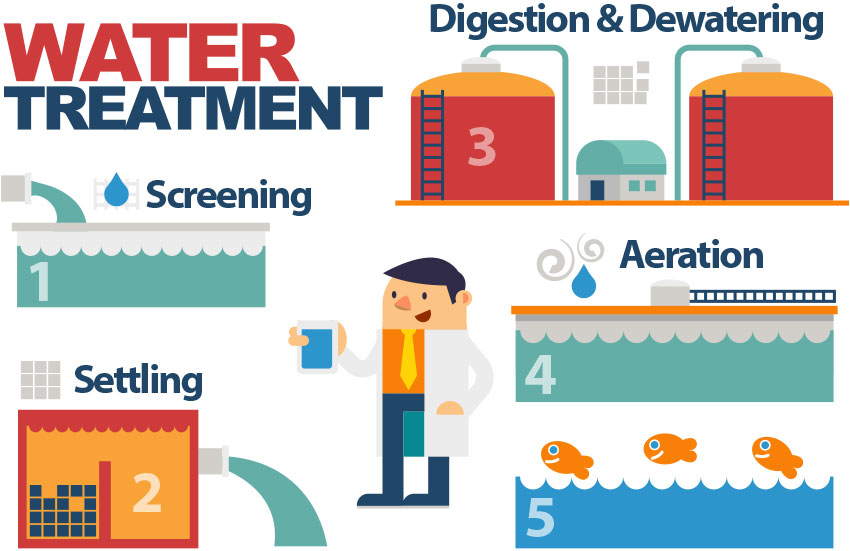 As wastewater enters the treatment plant, it goes through a screening process(1) to remove the big items that might have made their way into the wastewater, like a toy or a sock that got flushed down the toilet. From there, wastewater enters a series of settling tanks(2) where the flow is slowed down to allow material to float or settle. Some light material in the wastewater, called scum, will float and be skimmed off the surface and heavy material, called grit and sludge, will settle to the bottom to be scraped and pumped to a dewatering facility(3) where water is removed from the materials and then taken to the landfill while the remaining wastewater continues back on its treatment journey. 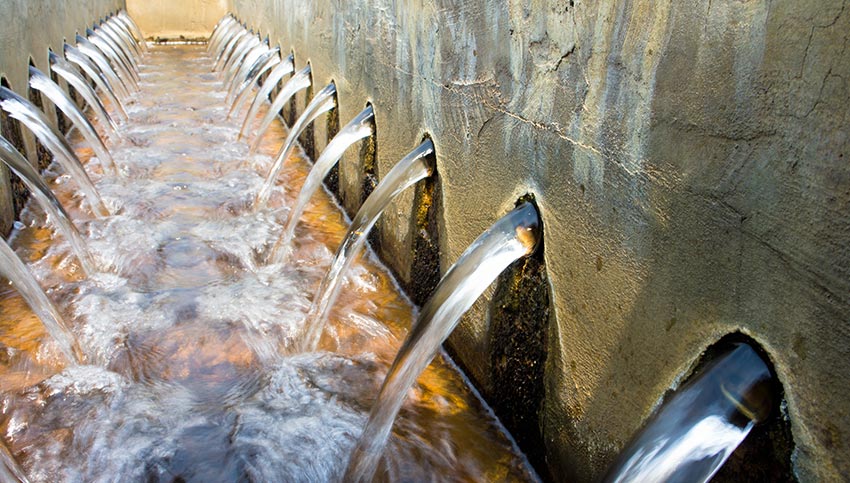
Wastewater enters a series of settling tanks where grit and sludge will sink to the bottom. Next, the wastewater is moved into big holding tanks called aeration basins(4), where bacteria are cultured to ‘eat up’ any extra nutrients, such as phosphorus, and organics in the wastewater. While a small amount of nutrients returned to the lake supports fish and wildlife, too much can cause excessive algal growth that overloads the lake ecosystem. The bacteria are naturally occurring in the water and when given the right conditions, like oxygen and water movement, they grow quickly and gobble up excess nutrients. After the aeration basins there are few more steps water needs to go through to get clean – namely filtration and disinfection. Most of the treatment facilities filter the majority of the treated water through a filtration process that uses sand and anthracite (a type of coal). However, some of the local wastewater treatment facilities also filter the water through an extremely small filter. This micro-filtration process is called membrane filtration. The filter pores in the membrane are large enough to let water molecules and some dissolved solids like salts pass through the membrane but are small enough to filter out the larger molecules that may pollute the water. About 25% of the valley’s wastewater receives this high tech filtration treatment. 
Left to right: Rapid sand filter; crushed anthracite used in filtration; ozone generator control panel. Regardless of filtration method, disinfection follows with a dose of chlorine, UV light, or ozone to inactivate any remaining bacteria or pathogens. Ozonation can provide improved reduction of some of the trace organic contaminants in the water. Now the cleaned wastewater is ready to head out through Las Vegas Wash to Lake Mead(5). 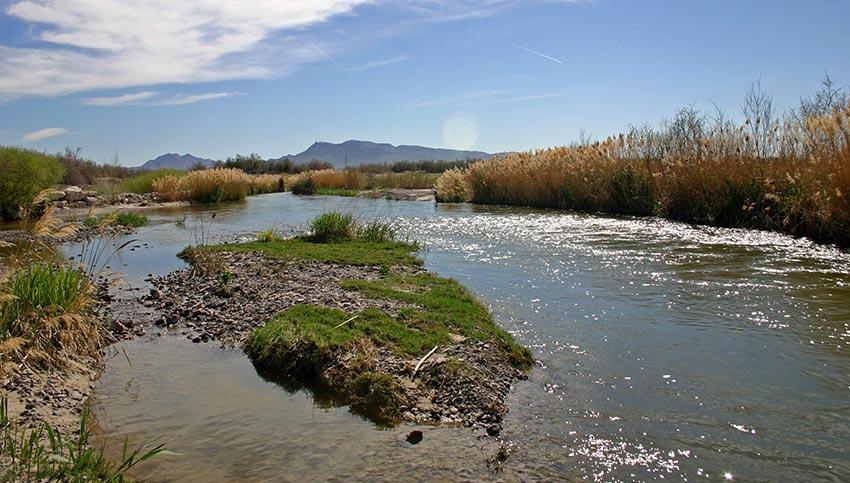
The majority of the highly treated wastewater flows into the Las Vegas Wash located on the east side of the valley. Treatment plants across the valley discharge their water in different ways. Some treatment plants release the water as direct non-potable reuse water (treated wastewater) and supply it to places like parks and golf courses to water their grass. The majority of the highly treated wastewater flows into the Las Vegas Wash located on the east side of the valley for indirect reuse. Therefore, all wastewater reaching a treatment plant in the Las Vegas Valley is reclaimed. 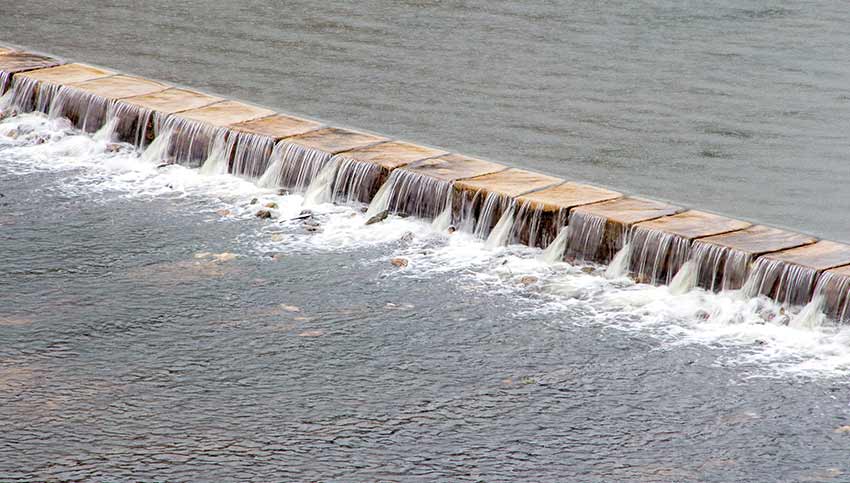
Weirs slow water flow and create small pond-like environments or wetlands. The wash is rich with aquatic and plant life and contains over twenty constructed weirs that slow water flow and create small pond-like environments or wetlands. The wetlands help further clean the water by taking up nutrients and removing a portion of pollutants that might be left behind. A small portion of highly treated wastewater is diverted to the Las Vegas Wetlands Park and provides clean water for the aquatic and plant life which can be enjoyed by the local community. 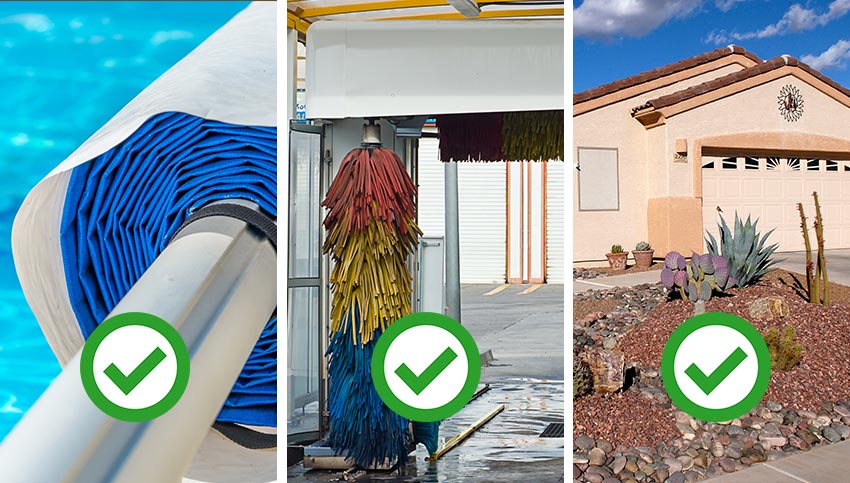
Help us conserve outdoor water use by using pool covers, washing your car at a car wash, and installing desert landscaping. Water used outdoors for things like watering our lawns or washing our car at home, is not captured or evaporates and is lost to us. On the other hand, indoor water is reclaimed and discharged by treatment facilities where it travels back into the Las Vegas Wash and then on to Lake Mead. This gives us water credits and allows us to take more water than originally allocated from Lake Mead. You can conserve water and help us meet our water needs by limiting your outdoor water use. For example, installing desert landscaping, washing your car at a car wash and using pool covers to limit evaporation all help to reduce water loss. 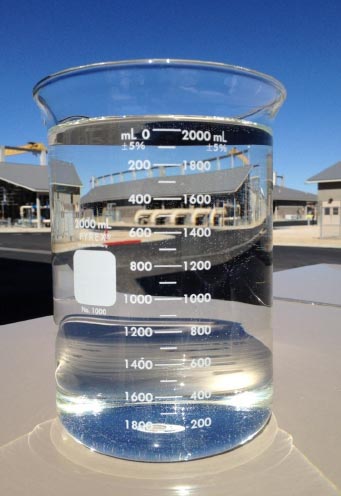
Wastewater treated through the wastewater treatment process goes through a number of steps to ensure the cleanest water possible. |
Last updated: April 4, 2017
